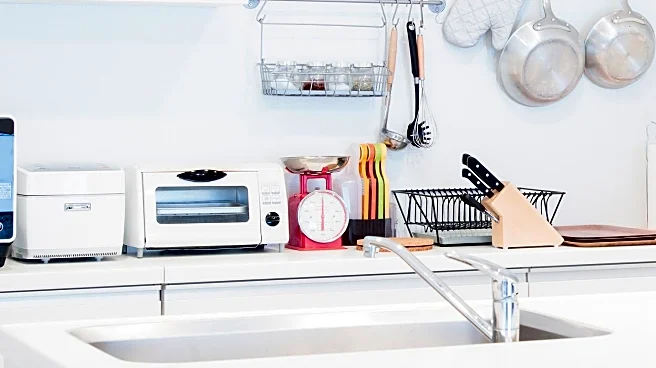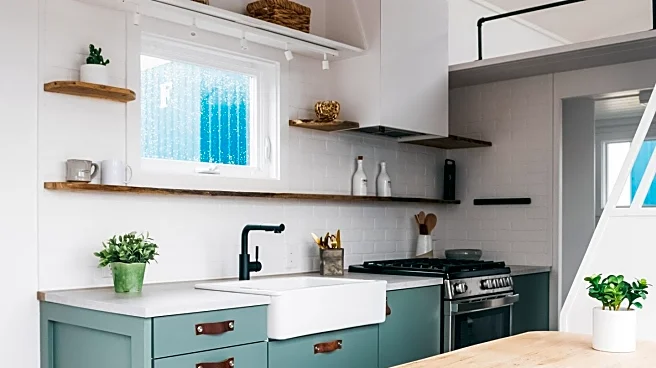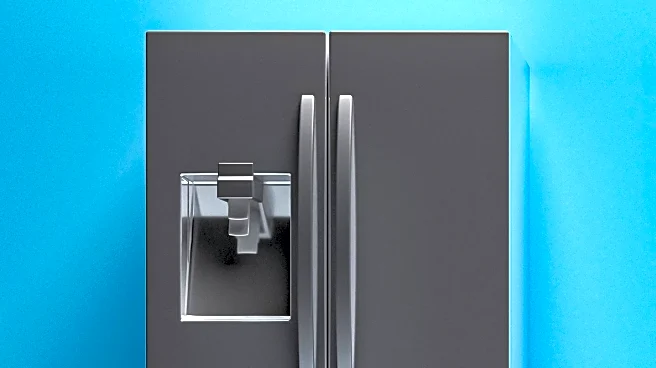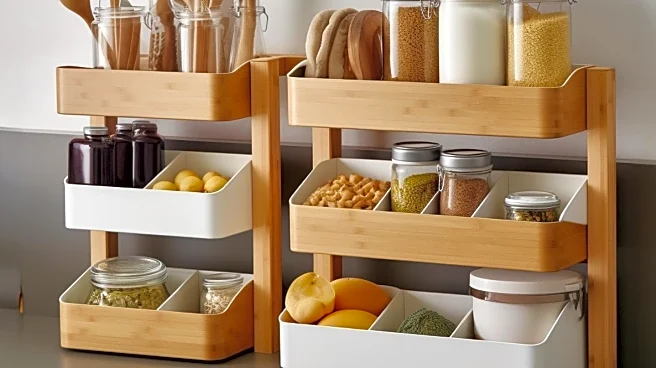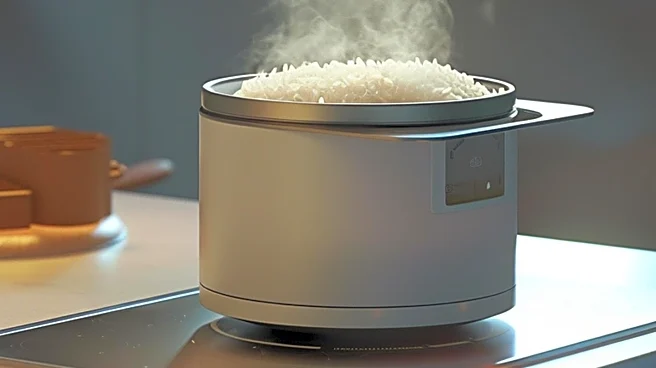What is the story about?
What's Happening?
Magnetic knife strips are gaining popularity as a preferred method for storing kitchen knives, offering advantages such as space-saving, maintaining sharpness, and improved sanitation. Culinary expert Pamela Vachon and chef Melissa Araujo advocate for the use of magnetic strips, highlighting their ability to free up counter space, prevent dulling of blades, and reduce the risk of bacteria growth compared to traditional knife blocks. Magnetic strips allow knives to be displayed and accessed easily, making them a practical choice for both home and professional kitchens. The strips are affordable, typically costing under $30, and can be mounted securely to ensure safety and functionality.
Why It's Important?
The adoption of magnetic knife strips reflects a shift towards more efficient and hygienic kitchen practices. By reducing clutter and improving accessibility, these strips enhance the functionality of kitchen spaces, particularly in urban environments where space is limited. The emphasis on sanitation addresses concerns about bacteria growth in traditional knife blocks, promoting healthier food preparation practices. This trend may influence kitchen design and storage solutions, encouraging manufacturers to innovate and offer more versatile and aesthetically pleasing options for consumers.
What's Next?
As magnetic knife strips become more popular, consumers can expect a wider variety of designs and materials to suit different kitchen aesthetics. Retailers may expand their offerings to include customizable options and additional features, such as integrated honing tools. The increased demand for these strips could lead to competitive pricing and promotional efforts by manufacturers. Consumers should consider the quality and strength of the magnetic strip when purchasing to ensure it can securely hold their knives.
Beyond the Headlines
The rise of magnetic knife strips highlights broader trends in kitchen organization and the growing importance of hygiene in food preparation. It may prompt discussions about the environmental impact of kitchen products, as consumers seek sustainable and durable options. Additionally, the focus on space-saving solutions reflects changing lifestyles and the need for adaptable living environments in densely populated areas.
AI Generated Content
Do you find this article useful?
